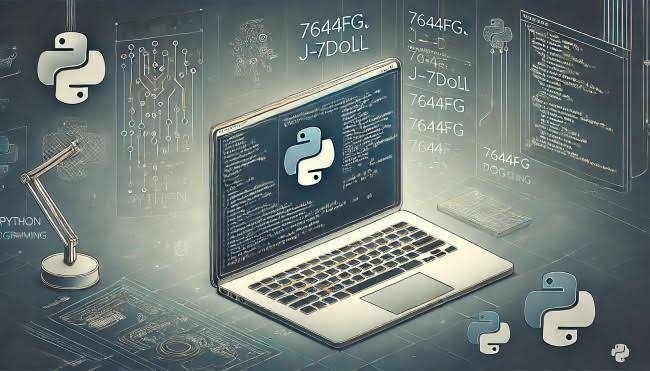Ever stumbled upon the term “7644fg.j-7doll” while working with Python and thought, “What on earth is this?” You’re not alone. This enigmatic identifier has puzzled many developers, leaving them scratching their heads. Let’s dive into this mystery and shed some light on what “7644fg.j-7doll” might be all about.
What is 7644fg.j-7doll in Python?
First things first: “7644fg.j-7doll” isn’t a standard term in the Python language or its vast ecosystem. So, if you’re scouring official Python documentation for answers, you might come up empty-handed. However, that doesn’t mean it’s entirely without context. Here are a few possibilities:
- Custom Identifier: Developers often use unique identifiers for variables, functions, or modules. “7644fg.j-7doll” could be one such identifier, especially in specialized or proprietary codebases.
- Error Code: Some applications generate specific error codes that aren’t widely recognized. Encountering “7644fg.j-7doll” might indicate such an application-specific error.
- Filename or Path: It’s possible that “7644fg.j-7doll” refers to a particular file or directory within a project, especially if the project has a complex structure.
Why Unique Identifiers Matter in Python
Unique identifiers play a crucial role in programming:
- Debugging: Distinct names help pinpoint issues quickly.
- Code Readability: Clear identifiers make code easier to understand.
- Avoiding Conflicts: Unique names prevent clashes with existing variables or functions.
How to Approach Unknown Identifiers in Python Code
Encountering an unfamiliar term like “7644fg.j-7doll” can be daunting. Here’s a step-by-step guide to tackle it:
- Check Documentation and Comments: Start by looking at any available documentation or inline comments in the code. Developers often leave notes explaining unique terms.
- Search the Codebase: Use your IDE’s search function to locate all instances of “7644fg.j-7doll” within the project. This can provide context on how and where it’s used.
- Consult Online Communities: Platforms like Stack Overflow or Reddit can be invaluable. Someone else might have encountered the same term and shared insights.
- Review Dependencies: Ensure all required packages are correctly installed and up to date. Sometimes, missing or outdated dependencies can lead to unexpected identifiers appearing.
- Use Debugging Tools: Employ Python’s built-in debugger or tools like PyCharm’s debugging features to trace where the identifier is being called or referenced.
Practical Use Cases for Unique Identifiers in Python Projects
Unique identifiers aren’t just for show; they serve practical purposes:
- Data Analysis: Labeling datasets or analysis functions distinctly aids in managing large volumes of data.
- Machine Learning: Differentiating between various models or algorithms is essential for tracking performance and results.
- API Development: Unique identifiers can represent specific endpoints or parameters, ensuring clarity in interactions.
Troubleshooting Errors Related to 7644fg.j-7doll in Python
If “7644fg.j-7doll” is causing errors:
- Verify Dependencies: Ensure all necessary packages are installed and compatible with your Python version.
- Review Naming Conventions: Check if the identifier adheres to your project’s naming standards.
- Debug Step-by-Step: Use debugging tools to trace the error’s origin and understand its context.
Best Practices for Using Unique Identifiers in Python
To make the most of unique identifiers:
- Consistency: Stick to a naming convention throughout your project.
- Documentation: Always document the purpose of unique identifiers, especially if they aren’t self-explanatory.
- Version Control: Use systems like Git to track changes related to these identifiers, ensuring clarity over time.
Conclusion
While “7644fg.j-7doll” might seem like a riddle wrapped in an enigma, understanding the role of unique identifiers in Python can demystify such terms. By following best practices and employing systematic troubleshooting, you can navigate and resolve issues related to unfamiliar identifiers with confidence.
FAQs
Q: Is “7644fg.j-7doll” a standard Python term?
A: No, it’s not recognized in standard Python documentation. It’s likely specific to a particular project or application.
Q: How can I prevent encountering unknown identifiers in my code?
A: Consistent naming conventions, thorough documentation, and regular code reviews can help minimize surprises.
Q: What tools can assist in debugging unknown identifiers?
A: Python’s built-in debugger (pdb), IDE features (like those in PyCharm or VSCode), and online communities are valuable resources.
Remember, every developer encounters mysteries in their coding journey. It’s all part of the adventure!











